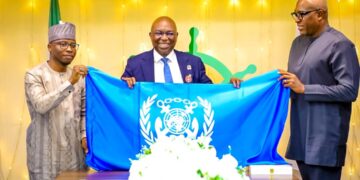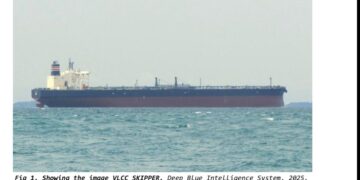The National Oceanic and Atmospheric
Administration (NOAA) of the US has implemented a program that will allow for
the production of sustainable seafood in federal waters.
Administration (NOAA) of the US has implemented a program that will allow for
the production of sustainable seafood in federal waters.
The goal of the program is to advance and
expand US aquaculture, as a complement to wild harvests, to keep the countries
fisheries sustainable and resilient to growing demand.
expand US aquaculture, as a complement to wild harvests, to keep the countries
fisheries sustainable and resilient to growing demand.
The new rule authorises NOAA Fisheries to
issue permits for an initial period of 10 years for growing species such as red
drum, cobia, and almaco jack in federal waters in the Gulf.
issue permits for an initial period of 10 years for growing species such as red
drum, cobia, and almaco jack in federal waters in the Gulf.
“Today we grow most of our food on land,
but we’re running out of water and arable land, so the question becomes, how
are we going to produce the food that the world will need in the future?”
Michael Rubino,director of NOAA fisheries asserted.
but we’re running out of water and arable land, so the question becomes, how
are we going to produce the food that the world will need in the future?”
Michael Rubino,director of NOAA fisheries asserted.
“Aquaculture is sure to be part of the
solution, and the United States is in a unique position. Every coastal nation
controls economic activities in a zone reaching 200 miles (321 kilometres) from
shore, and the US EEZ is the largest in the world at 4.4 million square miles
(11.4 million square kilometres),” Rubino stated.
solution, and the United States is in a unique position. Every coastal nation
controls economic activities in a zone reaching 200 miles (321 kilometres) from
shore, and the US EEZ is the largest in the world at 4.4 million square miles
(11.4 million square kilometres),” Rubino stated.
Marine aquaculture specifically refers to
the culturing of species that live in the ocean and US marine aquaculture
industry primarily produces oysters, clams, mussels, shrimp, and salmon.
the culturing of species that live in the ocean and US marine aquaculture
industry primarily produces oysters, clams, mussels, shrimp, and salmon.
After 30 years of innovation and learning,
the practices and technologies available today are significantly improved over
those available during the industry’s early years.
the practices and technologies available today are significantly improved over
those available during the industry’s early years.
While US aquaculture currently accounts
for 20 per cent of the value of domestic fishery landings, US production still
lags behind much of the world despite representing a significant opportunity
for coastal communities and domestic seafood production capacity.
for 20 per cent of the value of domestic fishery landings, US production still
lags behind much of the world despite representing a significant opportunity
for coastal communities and domestic seafood production capacity.
Concerns about the potential pollution of
ocean habitats and the effects on wild fish population have been thoroughly
considered by the administration.
ocean habitats and the effects on wild fish population have been thoroughly
considered by the administration.
“Salmon farming is going through a revival
in part because of responsible practices they’ve developed. Their locations are
properly sited in terms of water quality, their feeds are efficient in that
they don’t sink to the bottom, they vaccinate the fish instead of using
antibiotics.
in part because of responsible practices they’ve developed. Their locations are
properly sited in terms of water quality, their feeds are efficient in that
they don’t sink to the bottom, they vaccinate the fish instead of using
antibiotics.
“ They’ve had few if any escapes in recent
years, and they even fallow between crops like land-based farmers to allow the
bottom to recuperate. So we’ve made a lot of progress in terms of
environmentally friendly seafood farming,” Rubino stated.
years, and they even fallow between crops like land-based farmers to allow the
bottom to recuperate. So we’ve made a lot of progress in terms of
environmentally friendly seafood farming,” Rubino stated.
“The Gulf of Mexico rule builds on what
we’ve learned over the decades about producing seafood in a responsible and
sustainable way. It includes a comprehensive suite of environmental regulations
that will be enforced by NOAA Fisheries, the Environmental Protection Agency,
and others.
we’ve learned over the decades about producing seafood in a responsible and
sustainable way. It includes a comprehensive suite of environmental regulations
that will be enforced by NOAA Fisheries, the Environmental Protection Agency,
and others.
“Those regulations require that water
quality be maintained, that endangered species are protected, and that only
species native to the area are farmed,” Rubino added.
quality be maintained, that endangered species are protected, and that only
species native to the area are farmed,” Rubino added.
Credit: Baird Maritime































































